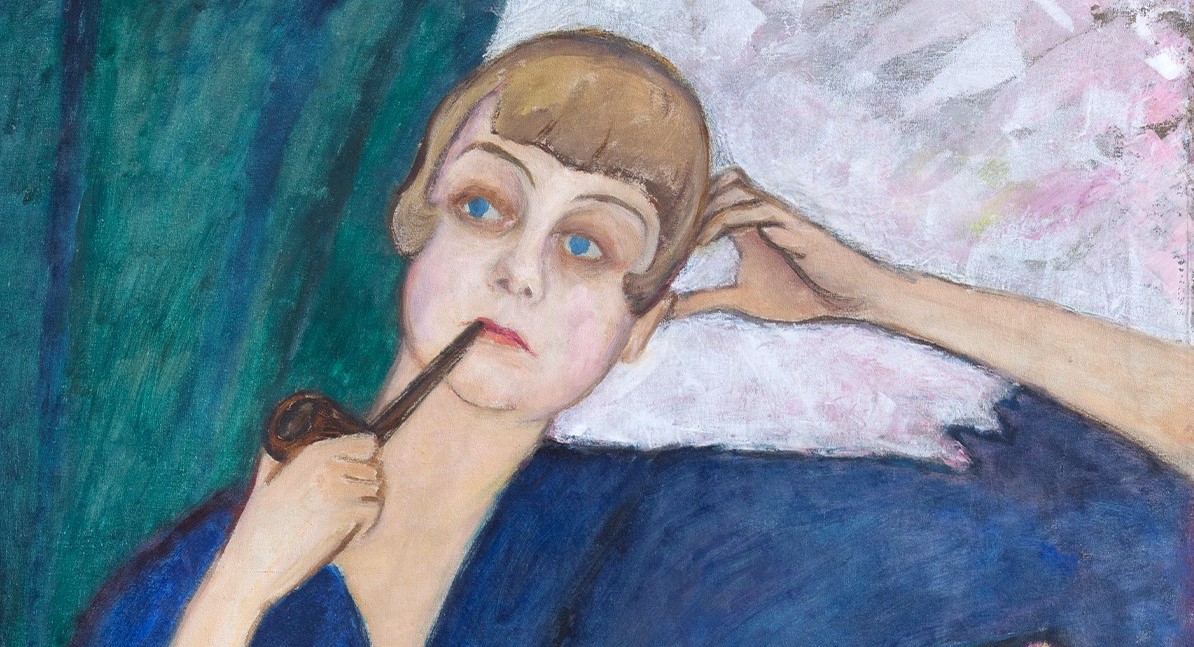Making Modernism is the first major UK exhibition devoted to women artists working in Germany in the early 20th century.
The exhibition at the Royal Academy in London will include 67 paintings and works on paper, primarily by Paula Modersohn-Becker, Käthe Kollwitz, Gabriele Münter and Marianne Werefkin, with additional works by Erma Bossi, Ottilie Reylaender and Jacoba van Heemskerck. Most of these artworks have never been exhibited in this country before. Although less familiar than their male counterparts, these artists were central to developing and disseminating Modernism. Through the lens of its female practitioners, critical themes of Modernism such as self-portraiture, still-life and urban and rural scenes will be re-evaluated, and attention will be focussed on the female body, childhood and maternal experience.
Dramatic modernist compositions executed with fluid brushwork and bright hues challenge the academic tradition
The exhibition will be arranged thematically. The opening section, Ourselves and Others, will feature self-portraits and portraits, showing the increasing participation of women artists in public life and revealing their crucial role in creating and sustaining the networks that supported various aspects of emergent Modernism in Germany. Through the making and exhibiting of their artwork, these artists challenged prevailing ideals of feminine roles as confined to the home. They questioned how they saw themselves and others through their searching portraiture. Paintings include Erma Bossi’s Portrait of Marianne Werefkin, 1910 (Gabriele Munter- und Johannes Eichner-Stiftung, Munich) and Gabriele Münter’s, Portrait of Anna Roslund, 1917 (Leicester Museums and Galleries, UK).
The second section, The Century of the Child, titled after Swedish writer Ellen Key’s influential 1900 publication, will explore how each artist depicted children. Although domestic themes were part of an established genre, modernist treatments of such subjects depart from sentimental works in which children symbolised simplicity, joy, hope and innocence to explore melancholy, tension, curiosity and unfulfilled desire. Instead, artworks depict babies, girls and boys as sites of complicated emotion and conflict, reflecting that women artists’ willingness to work was frequently tested by the pull of social expectation that demanded they marry and devote themselves to producing a family. Paintings and drawings will include Werefkin’s Twins, 1909 (Fondazione Marianne Werefkin, Museo Comunale d’Arte Moderna, Ascona), Kollwitz’s Woman with Dead Child, 1903 (Käthe Kollwitz Museum, Köln) Modersohn-Becker’s Girl with Child, 1902 (Kunstmuseum Den Haag, The Hague), and Münter’s Portrait of a Boy (Willi Blabb), 1908/09 (Gabriele Münter- und Johannes Eichner-Stiftung, Munich).
Building on the previous section, Sites of Intimacy will delve into the inner lives of Modersohn- Becker and Kollwitz, further exploring maternal instinct, the female body, intimate relationships and eroticism. In these works, the mother and child theme is secularised, modernised and recalibrated to reflect the physicality and psychological depth of the choices surrounding motherhood. Images established through masculine representations of the female nude are overturned. Key works in this section will include Kollwitz’s Love Scene I, c.1909/1910 (Käthe Kollwitz Museum, Köln), Ottilie Reyaender’s Beta naked, c. 1900 (Worpsweder Kunststiftung Friedrich Netzel, Worpsweder Kunsthalle) and Modersohn- Becker’s Mother with Child on her Arm, Nude II, autumn 1906 (Museum Ostwall im Dortmunder U, Dortmund) and Self-portrait as a Standing Nude with Hat, summer 1906 (Paula-Modersohn-Becker-Stiftung, Bremen, on loan from a private collection).
A section entitled City and Country: Journeys and Migrations will present paintings of urban life and explore changing roles for women in a variety of contexts; at leisure, at work, while rural subjects reveal the need to take refuge away from the metropolis to produce art that celebrated the natural beauty of the countryside. These works will signal perspectives of female experiences of modernity. They will chart the various ‘journeys’ that many artists included in the exhibition undertook, both material and spiritual, due to personal circumstances or the chaos and destruction brought on by the First World War. Works will also highlight the importance of a sense of place, for example, the artist’s colony of Worpswede for Modersohn-Becker, Murnau for Münter and Ascona for Werefkin. Key works in this section include Landscape with Windblown Trees, 1900 (Principal and Fellows of Somerville College, Oxford); Still-life on the Tram (After Shopping), c.1912 (Gabriele Münter- und Johannes Eichner-Stiftung, Munich), and Circus – Before the Show, 1908/10 (Leopold- Hoesch-Museum, Düren).
The final part of the exhibition will consider the critical role of still life in the work of these artists. The concept of ‘still lives brings to mind quiet moments of reflection and meditation recorded by the artists in their letters, diaries and journals. Dramatic modernist compositions executed with fluid brushwork and bright hues challenge the academic tradition and act as vehicles for exploring form, colour and spiritual meaning. Highlights within this section include Münter’s Apples on the Wall, 1908 (Gabriele Münter- und Johannes Eichner-Stiftung, Munich) and Modersohn-Becker’s Still-life with Goldfish Bowl, 1906 (Von Der Heydt-Museum, Wuppertal).
Making Modernism: Paula Modersohn-Becker, Käthe Kollwitz, Gabriele Münter and Marianne Werefkin The Gabrielle Jungels-Winkler Galleries 12 November 2022 – 12 February 2023

